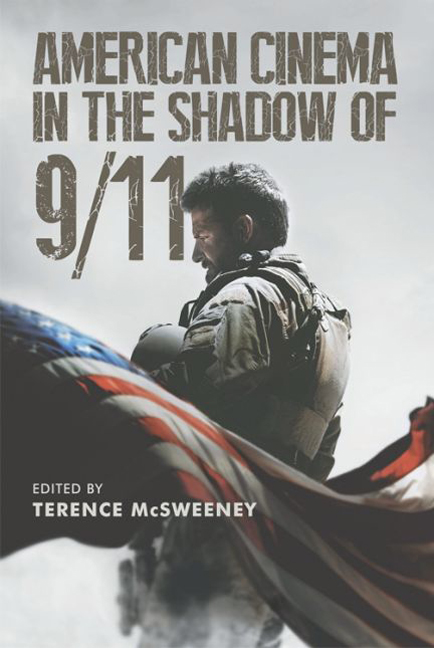Book contents
- Frontmatter
- Contents
- List of Figures
- Acknowledgements
- Foreword
- Introduction: American Cinema in the Shadow of 9/11
- Part I Dramatisations of the ‘War on Terror’
- Part II Influences of the ‘War on Terror’
- Part III Allegories of the ‘War on Terror’
- 11 ‘Daddy, I'm ScareD. Can We Go Home?’ Fear and Allegory in Frank Darabont's the Mist (2007)
- 12 The Terrible, Horrible Desire to Know: Post-9/11 Horror Remakes, Reboots, Sequels and Prequels
- 13 Post-9/11 Power and Responsibility in the Marvel Cinematic Universe
- 14 Nowhere Left to Zone in Children of Men (2006)
- 15 Traumatise, Repeat, Finish: Military Science Fiction (long) After 9/11 and Doug Liman's Edge of Tomorrow (2014)
- Selected Filmography
- Notes on the Contributors
- Index
12 - The Terrible, Horrible Desire to Know: Post-9/11 Horror Remakes, Reboots, Sequels and Prequels
from Part III - Allegories of the ‘War on Terror’
Published online by Cambridge University Press: 10 May 2017
- Frontmatter
- Contents
- List of Figures
- Acknowledgements
- Foreword
- Introduction: American Cinema in the Shadow of 9/11
- Part I Dramatisations of the ‘War on Terror’
- Part II Influences of the ‘War on Terror’
- Part III Allegories of the ‘War on Terror’
- 11 ‘Daddy, I'm ScareD. Can We Go Home?’ Fear and Allegory in Frank Darabont's the Mist (2007)
- 12 The Terrible, Horrible Desire to Know: Post-9/11 Horror Remakes, Reboots, Sequels and Prequels
- 13 Post-9/11 Power and Responsibility in the Marvel Cinematic Universe
- 14 Nowhere Left to Zone in Children of Men (2006)
- 15 Traumatise, Repeat, Finish: Military Science Fiction (long) After 9/11 and Doug Liman's Edge of Tomorrow (2014)
- Selected Filmography
- Notes on the Contributors
- Index
Summary
INTRODUCTION
Given horror's persistent ties to cultural anxiety, it is not surprising that the genre experienced a significant rebirth in American cinemas post-9/11, an era indelibly marked by terrorism, war and near-constant global tensions. Even though horror is, by its very nature, a culturally marginalised genre, one that appeals primarily to a specific audience and has only rare mainstream crossover appeal, even a cursory glance at the theatrical marketplace in recent years shows that it has been growing in both popularity and production since 9/11. In 1995, for example, there were only sixteen horror films in wide release in the US, representing 2.78 per cent of the market share. Ten years later, in 2005, those numbers had increased to twenty-nine horror films in wide release and 5.73 per cent of the market share – a percentage increase of more than 80 per cent in terms of production and 106 per cent in terms of market share. And this elevated presence of horror films has persisted in subsequent years. From 2005 to 2015, there has been an average of twenty-seven horror films in wide release, the biggest year being 2012 with thirty three releases, although those films commanded only 2.79 per cent of the market share. By that metric, 2007 was actually the decade's biggest year for horror films, with thirty-one releases accounting for 7.16 per cent of the market share (‘Horror: Year-by-Year Market Share’).
During this period, one of the dominant trends in the genre has been a cycle of remakes and reboots of earlier films and film series, which started most prominently by reworking the low-budget, independently produced horror films of the 1970s but quickly spread to both the independent and major studio-distributed films of the late '70s and 1980s. It is important here to distinguish between a remake and a reboot, as the terms are sometimes used interchangeably despite describing very different products. As William Proctor (2012) notes:
Reboots and remakes share an abundance of commonalities, but this does not mean they are conjoined entities without distinction … a film remake is a singular text bound within a self-contained narrative schema; whereas a reboot attempts to forge a series of films, to begin a franchise anew from the ashes of an old or failed property.
- Type
- Chapter
- Information
- American Cinema in the Shadow of 9/11 , pp. 249 - 268Publisher: Edinburgh University PressPrint publication year: 2017



